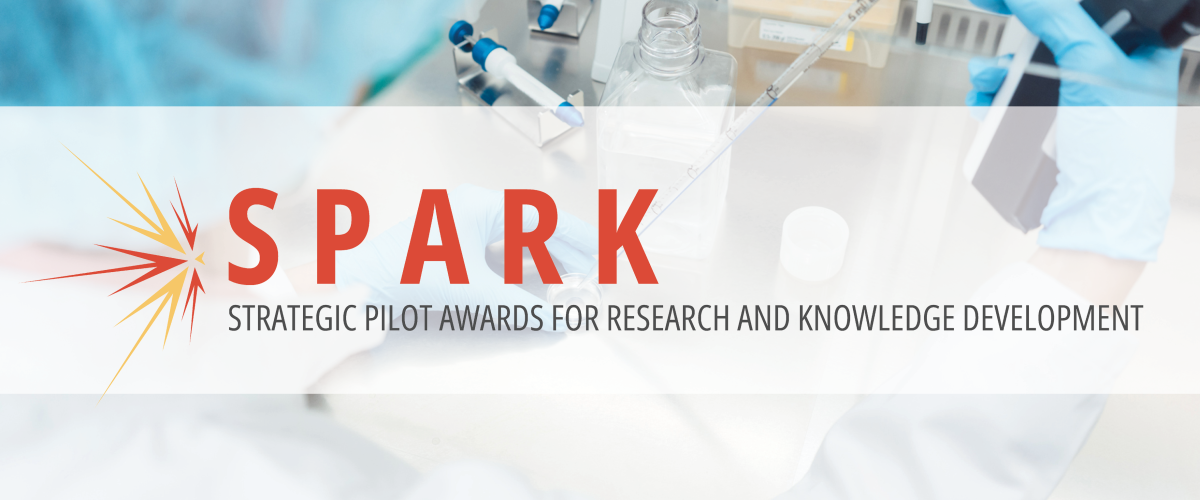
Concept
The SPARK Innovation Grant (SIG) represents Duke Anesthesiology’s newest investment in innovation—providing targeted seed funding to ignite promising ideas that bridge science, data, and patient care. These $10,000 pilot grants support projects with strong clinical or translational potential, helping investigators generate early data, refine study design and build a foundation for sustainable external funding or clinical implementation.
Purpose and Vision
Just as the DREAM Innovation Grant (DIG) accelerates faculty toward major extramural funding, the SPARK Innovation Grant (SIG) creates an earlier on-ramp—fueling bold, feasible ideas that hold clear promise for patient-centered impact.
SPARK aims to:
- Accelerate clinical and translational innovation within anesthesiology, pain medicine and critical care
- Empower investigators to test hypotheses rooted in clinical observations and capture proof-of-concept data
- Foster a culture of rigorous inquiry, collaboration and scholarly growth across all divisions
- Connect early ideas from the bedside, OR, or data environment to tangible advances in care delivery and outcomes
Grant Details
- Funding Amount: Up to $10,000
- Duration: 12 months
- Up to four SPARK Innovation Grants will be available for the 2025–2026 cycle
Eligibility:
- Faculty with a primary appointment in Duke Anesthesiology
- Early- to mid-career investigators within 10 years of completing training
- Applicants must not have current or prior NIH funding or active career development/mentorship awards (e.g., K-series, FAER, or equivalent)
- Projects may include clinical trials, outcomes studies, data-driven analyses, implementation science, or translational research relevant to anesthesiology, pain medicine, or critical care
Deliverables:
- Quarterly progress reports summarizing milestones achieved and challenges encountered
- Monthly participation in departmental Works-in-Progress sessions to share updates and foster collaboration
- Final report outlining results, next steps and plans for follow-on funding
- Mandatory Outcomes:
- Submission of a manuscript or abstract for peer-reviewed publication or presentation at a national meeting
- Oral presentation of results at the department’s annual Academic Evening or an equivalent internal symposium
Selection Criteria:
- Clinical relevance and potential for translation to patient care
- Originality and feasibility of the scientific idea
- Rigor, clarity and appropriateness of the research plan
- Likelihood of leading to sustainable research or extramural funding
Evaluation Rubric
| Criterion | Description |
|---|---|
| Scientific Merit | Clarity, rigor and innovation of hypothesis and design |
| Clinical and Translational Relevance | Direct connection to patient outcomes, perioperative safety or systems of care |
| Feasibility and Resources | Realistic timeline, achievable milestones and use of departmental infrastructure or data resources |
| Investigator and Mentorship | Applicant experience, collaborative team structure and access to biostatistical and design consultation |
| Future Potential | Likelihood of generating extramural proposals, publications or meaningful clinical adoption |
Review Process
Applications will undergo peer review by a departmental advisory panel representing diverse research areas. Written critiques and funding decisions will be provided within four weeks of the submission deadline.
Proposal Requirements
Applications should be concise and structured as follows:
- Project Narrative (≤20 lines): Clear description of problem, innovation and impact
- Specific Aim(s) (one page): Defined hypothesis and measurable outcomes
- Research Strategy (≤3 pages):
- Background and Significance
- Approach and Methodology
- Milestones and Feasibility
- Team and Environment
- Plan for Future Development
- Budget and Justification
- Allowable costs include biostatistics support, data ticket time, research design consultation, materials and supplies, participant or animal costs, laboratory tests, and essential non-faculty personnel
- Faculty salary support is not permitted
- Maximum duration: 12 months
- Biosketch(es) of Key Personnel
- Formatting: 11-pt Arial, single-spaced, 0.5-inch margins; compiled into one PDF. Appendices will not be considered.
Regulatory Approvals
IRB/IACUC approval may be pending at the time of application submission but must be obtained before funds are released.
Reporting and Recognition
SPARK investigators are expected to actively disseminate their findings and contribute to the department’s academic mission.
Awardees will:
- Present twice in the monthly departmental Works-in-Progress sessions to discuss updates and foster peer mentorship
- Provide quarterly written progress reports and a final report
- Deliver an oral presentation during Academic Evening or an equivalent internal event
- Demonstrate scholarly output through peer-reviewed publication and national presentation
Administrative Expectations
Departmental funds must be used only for the approved scope of work. Significant changes require prior approval. Unspent funds at project end revert to the department. Continued support depends on timely progress and deliverables.
Funding and Sustainability
SPARK Innovation Grants are supported by Duke Anesthesiology’s DREAM Campaign and sustained through philanthropic gifts from alumni, faculty and partners who believe in the power of early discovery. A contribution of $10,000 sponsors one SPARK Innovation Grant, directly fueling the kind of creative, high-yield science that transforms ideas into impact.